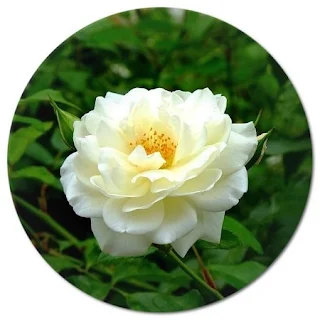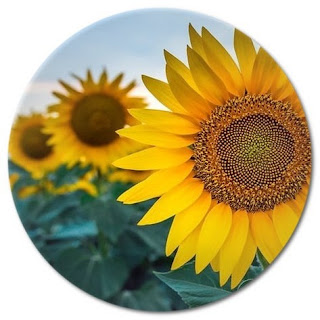Which flower is white in colour? White Flowers
We look at wildflowers, potted plants, garden plants and shrubs that bloom in white. The flower colors of plant species are often the result of multiple factors. There may be a specific meaning or reason for white flowers, or plants that bloom in this color may also have evolved due to different ecological and evolutionary selection factors. We provide information about white flowers that can grow in all countries. We offer information about the most beautiful white flowers that grow in our world.
There are numerous flowers that come in white, offering a sense of purity, elegance, and simplicity. Here are some examples of white flowers:
White Lily (Lilium candidum): Known for its large, fragrant blooms, the white lily is associated with purity and virtue.
White Rose (Rosa spp.): White roses symbolize purity and innocence and are often used in weddings and other ceremonies.
Daisy (Bellis perennis): Daisies have white petals surrounding a yellow center, creating a classic and cheerful appearance.
Calla Lily (Zantedeschia spp.): The elegant and trumpet-shaped blooms of the calla lily are often used in weddings and formal arrangements.
Magnolia (Magnolia spp.): Magnolia trees produce large, fragrant, white flowers that are both beautiful and symbolic.
White Tulip (Tulipa spp.): White tulips represent forgiveness and are often associated with new beginnings.
Cherry Blossom (Prunus serrulata): Some varieties of cherry blossoms, such as Yoshino cherry, have white flowers that are highly celebrated during the spring season.
Orchid (various genera): Several orchid species and hybrids produce white flowers, representing elegance and beauty.
Gardenia (Gardenia spp.): Gardenias are known for their creamy white, fragrant blooms that are often used in bouquets and corsages.
Jasmine (Jasminum spp.): Some jasmine varieties, like Jasminum officinale, have small, white, highly fragrant flowers.
Carnation (Dianthus caryophyllus): White carnations can symbolize purity and luck and are often used in floral arrangements.
Lily of the Valley (Convallaria majalis): This delicate and fragrant flower has tiny, bell-shaped blooms and is often used in bridal bouquets.
These are just a few examples, and there are many more white flowers with various shapes, sizes, and fragrances. The choice of white flowers often depends on personal preferences, cultural symbolism, and the context in which they are used.
What are the white flowers called?
The term "white flowers" is a general descriptor for any flowers that are predominantly white in color. Flowers come in a wide variety of species, and many of them have white varieties. The name of a specific white flower depends on the particular species or genus it belongs to. Here are a few examples:
White Lily (Lilium candidum): A fragrant and elegant flower associated with purity.
White Rose (Rosa spp.): Symbolic of purity, innocence, and often used in weddings.
White Daisy (Bellis perennis): Classic, cheerful flowers with white petals and a yellow center.
Calla Lily (Zantedeschia spp.): Elegant, trumpet-shaped flowers often used in formal arrangements.
White Tulip (Tulipa spp.): Represents forgiveness and new beginnings.
White Orchid (various genera): Orchids are diverse, and several species have white flowers, representing beauty and elegance.
White Gardenia (Gardenia spp.): Known for its creamy white, highly fragrant blooms.
White Carnation (Dianthus caryophyllus): Carnations come in various colors, and the white ones can symbolize purity and luck.
Lily of the Valley (Convallaria majalis): Delicate, bell-shaped flowers with a sweet fragrance.
White Hydrangea (Hydrangea spp.): Hydrangea blooms can vary in color based on soil pH, and some varieties produce white flowers.
These are just a few examples, and there are many more white flowers with unique characteristics and symbolism. If you have a specific white flower in mind, knowing its scientific name or specific characteristics can help identify it more accurately.
What is the name of the white hairy flower?
The description of a "white hairy flower" is quite general, as many flowers have fine hairs or fuzz on their petals or other parts. Without more specific details, it's challenging to pinpoint a particular flower. However, I can provide information about a few white flowers with noticeable fine hairs or a fuzzy texture:
Edelweiss (Leontopodium alpinum): Edelweiss is a white mountain flower known for its woolly or fuzzy appearance. It often grows in alpine regions.
Lamb's Ear (Stachys byzantina): While not a typical flower, Lamb's Ear has white to pinkish flowers and is known for its soft, silvery-white, and fuzzy leaves.
Pasqueflower (Pulsatilla vulgaris): The Pasqueflower has fuzzy, hairy stems and leaves, and it produces white to purple flowers in early spring.
If you have more details about the specific features or characteristics of the white hairy flower you're referring to, it might be easier to identify. Alternatively, consulting a local plant guide or a horticulturist in your area could help narrow down the possibilities based on plants commonly found in your region.
What is a popular white flower?
One of the most popular white flowers is the White Rose (Rosa spp.). White roses are widely recognized and appreciated for their timeless beauty and classic elegance. They are often associated with purity, innocence, and love. White roses are commonly used in various floral arrangements, especially in weddings and other formal occasions.
The popularity of white roses is not only due to their aesthetic appeal but also because they hold symbolic significance in different cultures. They can convey messages of purity, new beginnings, and reverence. White roses are versatile and pair well with other flowers or different color schemes, making them a popular choice for a wide range of floral designs and events.
White Blooming Potted Plants
If you're looking for white-blooming potted plants to enhance your indoor or outdoor space, there are several options to consider. Here are some popular white-blooming potted plants:
Peace Lily (Spathiphyllum spp.): Peace lilies are known for their elegant, white blooms and lush green foliage. They are excellent indoor plants and are relatively easy to care for.
Orchids (Orchidaceae family): Orchids come in various colors, including white. Phalaenopsis orchids, in particular, are popular for their long-lasting, white flowers. Orchids are often grown as indoor plants.
Gardenia (Gardenia spp.): Gardenias are fragrant white flowers that are often grown in pots. They have glossy green leaves and are prized for their sweet fragrance.
Azalea (Rhododendron spp.): Azaleas come in various colors, including white. They are compact and make lovely potted plants, especially during their blooming season.
Calla Lily (Zantedeschia spp.): Calla lilies have elegant, trumpet-shaped white flowers and are popular choices for potted plants both indoors and on patios.
Geranium (Pelargonium spp.): Some varieties of geraniums produce white flowers. They are commonly grown in containers and are known for their vibrant blooms.
Camellia (Camellia spp.): Camellias come in different colors, including white. They have glossy evergreen leaves and produce beautiful, rose-like flowers.
Begonia (Begonia spp.): Certain begonia varieties, such as the tuberous begonias, have white blooms. They are well-suited for container gardening.
Dianthus (Dianthus spp.): Some varieties of dianthus, commonly known as pinks, produce white flowers. They are often grown in pots and are appreciated for their fragrant blooms.
African Violet (Saintpaulia spp.): African violets are compact plants that come in various flower colors, including white. They are suitable for indoor environments.
When choosing potted plants, consider the specific growing conditions, such as light and water requirements, to ensure they thrive in their new environment. Additionally, check the mature size of the plants to ensure they are suitable for the size of the pot and the space where you intend to place them.






Comments
Post a Comment